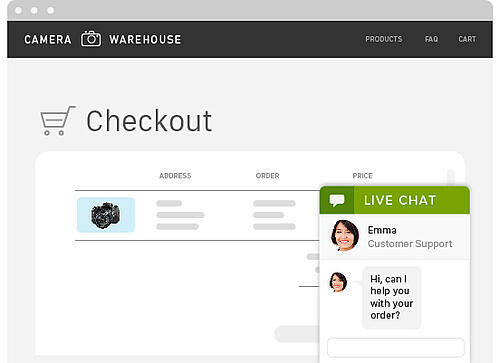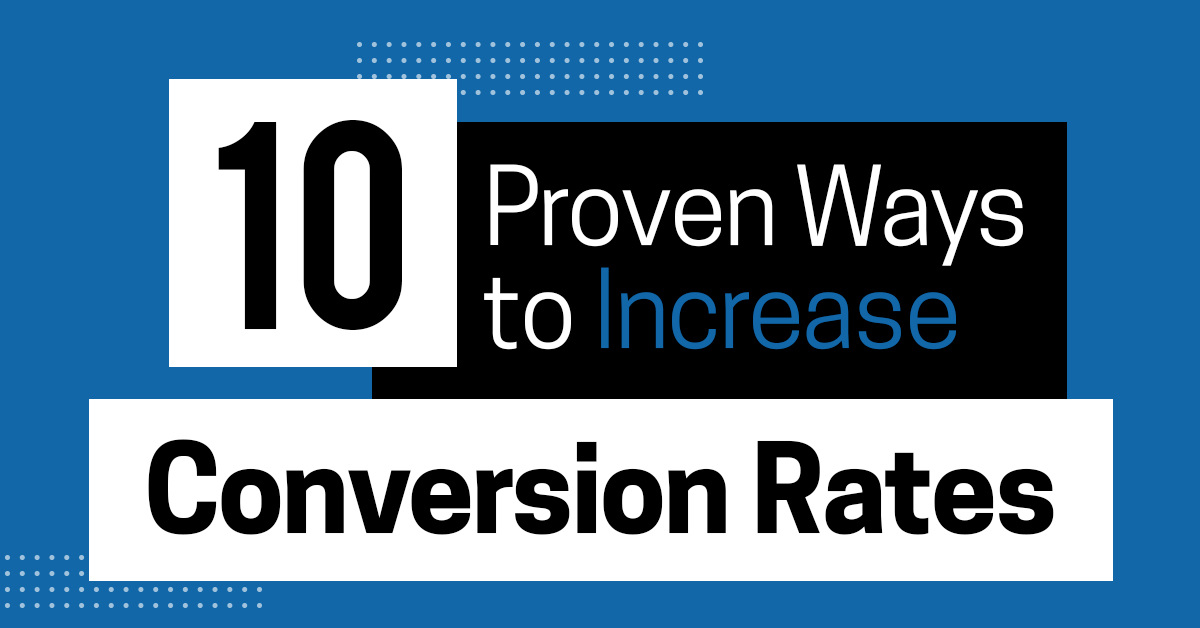People prefer shopping online because of the convenience it offers, but why do most consumers click away without completing their purchase? Take a careful look at your checkout process, since it can be the reason why those abandoned shopping carts are piling up. If you think this might be why your sales are not picking up, try implementing these 10 proven techniques to increase your ecommerce conversion rate.
Top 10 Ecommerce Conversion Rate Optimization Techniques
#1: Use Short Forms
People hate filling out long forms, so if your goal is to increase your ecommerce conversion rate, don’t ask for unnecessary information. If a particular field is not essential to your business, remove it from your checkout form, since it may only increase your cart abandonment rate. Studies indicate that 69% of shopping carts were abandoned in 2019 for several reasons, including a poorly optimized checkout process.
#2: Optimize The Checkout Process.
Simplify and optimize your checkout form to prevent people from dropping out without completing their purchase. Don’t know where to start? Consider these simple ecommerce conversion rate optimization tactics to help you achieve your goal.

- Avoid using multiple column forms, and group relevant information together to reduce or eliminate unnecessary snags during the process.
- Set up Google’s autofill function to make it easier for customers to fill in their address or credit card information.
- Provide multiple payment options.
- Show shopping cart contents so people will know exactly what they are buying.
- Never force your customers to create an account. Many of them may not be comfortable providing their personal information online, while some are still looking to see if your online store is worth their while. If you want to increase your ecommerce conversion rate, don’t scare them off. Let them complete their purchase using a guest account. If they are happy with their initial purchase, they will be more likely to come back and buy from you again. Who knows? They might even create a user account on their next visit.
#3: Capture Emails
Acquiring new customers is always a good thing, but unfortunately, it can be pretty expensive. Focus on taking care of your existing customers instead, and reach out to them from time to time to entice them to buy from you again. You’ll need to know how to reach them, so don’t forget to ask for their emails. Better yet, use email as one of the first fields in your checkout form.

Numerous studies suggest that repeat customers are extremely valuable for several reasons. Consider these:
- 40% of the revenue generated by online retailers in the US comes from returning (one previous purchase) and repeat (multiple previous purchases) customers, who represent a mere 8% of all visitors. (Adobe Digital Index Report)
- 30% of customers say they prefer buying from websites they’ve bought from previously. (KPMG)
- A customer has a 27% chance of returning to your store after making a single purchase, and a 60% to 70% chance of making another purchase on a future visit. (Marketing Metrics)
- Repeat customers spend more on each purchase and have a higher lifetime value than first-time buyers. (io)
- Repeat customers are more likely to promote your brand to their network. Customers who made 10 purchases refer 50% more people to a store compared to a buyer who made a single purchase. (Bain & Company)
These figures clearly indicate that repeat customers are extremely profitable, so do your best to keep them around. Your efforts will be immensely rewarded.
#4: Get Customers Back On Track With Cart Abandonment Software.
Shopping cart abandonment is one of an online store owner’s worst nightmares. Nearly 70% of all customers leave their shopping carts without completing their purchase. Needless to say, this can be extremely bad for business.
There are several reasons why customers click away at any point during the purchase stage. Coming high on the list are unexpectedly high shipping costs (44%) and the fact that the customer is not yet ready to make a purchase (41%).
High product price (25%), the absence of a guest checkout option (14%), and a long or complex checkout process (11%) will also hurt your conversion rate. Additionally, a slow loading website (11%), limited payment options (7%), or the absence of an express shipping option (6%) can negatively affect your conversion rate.
Thankfully, you can engage and nurture these customers and encourage them to pick up where they left off. How? By using a shopping cart abandonment solution. Here is some top-rated shopping cart abandonment software that can improve ecommerce conversion rate optimization.
- This platform offers an inexpensive email solution designed to recover abandoned shopping carts. By sending the right message at the right time, CartStack promises to recover at least 15% of your lost ecommerce sales. CartStack can easily be integrated with most ecommerce platforms but it is also one of the more expensive solutions.
- If you’re looking for a cart abandonment tool that allows you to set up personalized remarketing emails for improving ecommerce conversion rate optimization, this is something you need to consider. Rejoiner also allows you to measure the effectiveness of your email campaigns and provide centralized customer data so you can maintain a complete profile for each of your customers.
- Qualaroo is a well-designed survey tool that helps you understand why people are leaving your site and abandoning their shopping carts. With Qualaroo, you can set up the questions you want to ask to identify which pages have the highest exit or bounce rates, what people dislike about your site, why they spend more time on a particular page, and what prevents them from checking out.

- While Google Analytics may show you the link visitors clicked on your website, CrazyEgg goes a step further by showing which parts of the page they actually clicked on. This tool can also identify multiple links pointing to the same page or product (and which link gets clicked on more often) and can show you how far visitors scroll down the page. Additionally, it can determine which parts of the page should be made accessible to visitors.
- Yotpo Social Reviews. Social reviews play a crucial role in the success or failure of any online business since they significantly affect customer engagement, SEO rankings, and sales. Additionally, reviews foster trust and reinforce customer loyalty. For these reasons, many ecommerce store owners use Yotpo Social Reviews. Yotpo’s AI-powered solutions are designed to collect and display customer reviews, ratings, and other customer-generated content across your site with ease. Thus, you can use them to enhance your visual marketing efforts, build customized loyalty and referral programs, understand feedback and break them down into actionable insights.
#5: Prioritize Security
Reduce the risk of payment fraud by using the proper protocols in your ecommerce store. For best results, display trust badges and seals along with the logos of your payment providers, and set up your store with an SSL certificate. To further discourage fraud, require customers who are using their credit and debit cards to key in their CVV.
#6: Offer Free Shipping
There are several good reasons why free shipping options work. Here are some of them.

- It increases sales. According to a Usability Science study, offering free shipping options increased the number and overall value of items added to customers’ shopping carts. People are eager to buy more and are willing to wait for up to one week for their items to be delivered provided they don’t have to pay for shipping.
- It can increase ecommerce conversion rate. As mentioned earlier, most customers abandon their carts at checkout due to high shipping costs. With free shipping, you can expect your customers to complete their purchase since the price stated on the product page and the total cost at checkout will be the same.
- It increases customer loyalty. Free shipping options are proven to improve customer retention rates. Based on the results of a study conducted by comScore and UPS, 54% of shoppers are most likely to take action when they receive a free shipping offer by email. This is quite interesting since email campaigns offering product discounts don’t produce the same results.
#7: Use Social Logins
Creating a new profile for each ecommerce site you visit can be a chore, especially since it means you have to add another entry to your ever-growing password list. Most of your customers think the same way, too. To overcome their resistance, offer social login options. This way, customers don’t have to create a new account and can simply log in using their existing Facebook, Twitter, Google, Yahoo, or other social media accounts.

If you are using WordPress, there are many social login plugins available (e.g. Youzer, Social Login, Ultimate Membership Pro, Super Socializer, AccessPress Social Login Lite, WooCommerce Social Login, UserPro, etc.) that can do the work.
#8: Hook Them With an Irresistible Return Policy.
You wouldn’t want to buy something without an express guarantee that you can return or exchange it if it doesn’t work or meet your expectations, right? No one wants to be locked into a commitment upon sale, so creating a clear and just return policy can work in your favor.
Research shows that out of the 60% online shoppers who make at least one return or exchange per year, 95% will make another purchase after a positive return experience. With the number of global digital buyers expected to reach 2.05 billion in 2020, there is a lot of money to be made by offering a better return or exchange experience for your customers. How do you do it? Here are some tips to help you achieve your goal.
- State your policies clearly. Make sure the average user understands what to expect from the process. Create a dedicated returns page and offer a free return policy if you can afford it.
- Provide a return label for every order. A majority of online shoppers (62%) would like to receive a return label in the initial shipment, while 61% would be happy if they could print return or exchange labels without having to contact the shipper first or waiting for a label. Give them what they want and see how it affects your bottom line.
- Consider the cost. If the cost of returning an item is about the same as the wholesale price of the preferred item plus the cost of shipping it back to your warehouse, you may simply send what the customer wants and let him keep the other item as a gesture of goodwill.
#9: Provide Real-Time Support.
Having online chat or phone support to quickly address any snags encountered by your customers during the checkout process can save the deal. Remember, consumers are most likely to trust a business that provides hands-on customer service in real-time, while 80% stop doing business with a company due to poor customer experience. Which end of the spectrum do you want to be in?

#10: Put Exit-Intent Popups to Work.
Don’t let your visitors leave without buying anything. At the very least, you need to capture their contact information. Considering all the work you put in just to attract visitors to your online store, you shouldn’t give up without a fight – and that’s exactly how exit-intent popups help.

Admittedly, popups can be annoying if not properly used, but it can help you convert 2% to 4% of visitors who are about to abandon your site. Popups are useful in enticing visitors into completing their purchase (e.g., by offering discounts, limited-time offers, and other sales-related information) and for providing useful information and support.
There is no reason for you to give up, even if your cart abandonment rate is currently at an all-time high. Leverage these 10 proven techniques and see how they can increase your ecommerce conversion rate.









